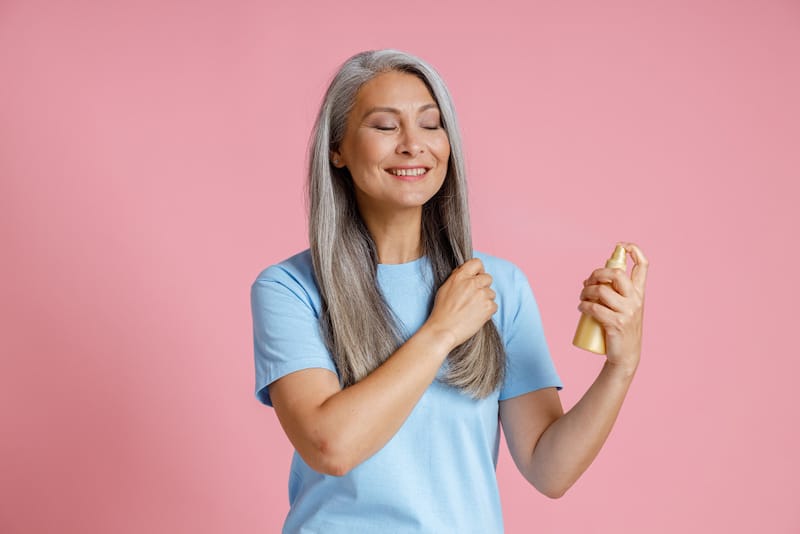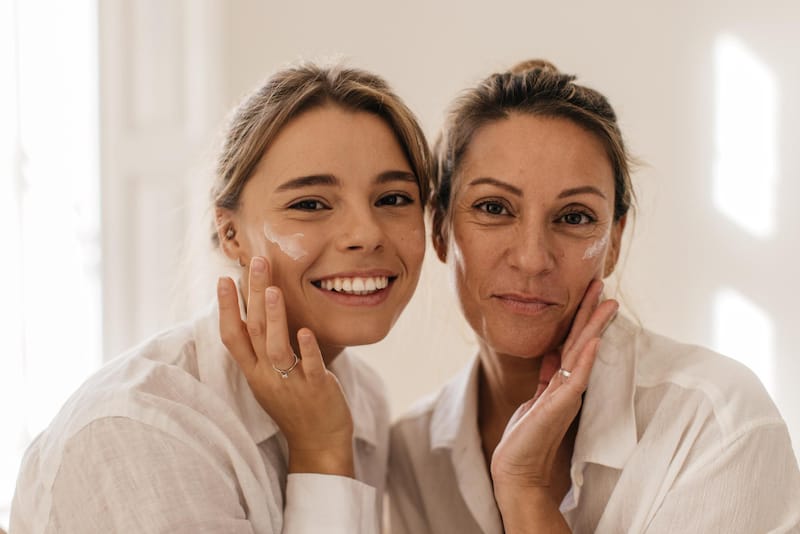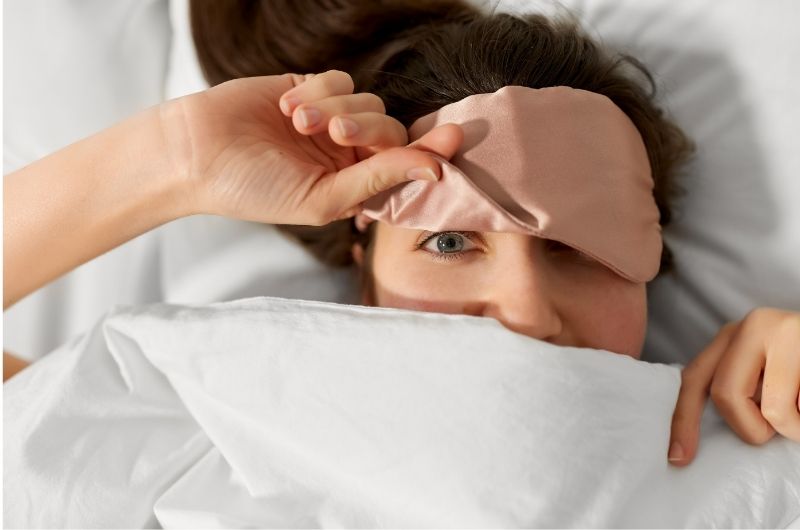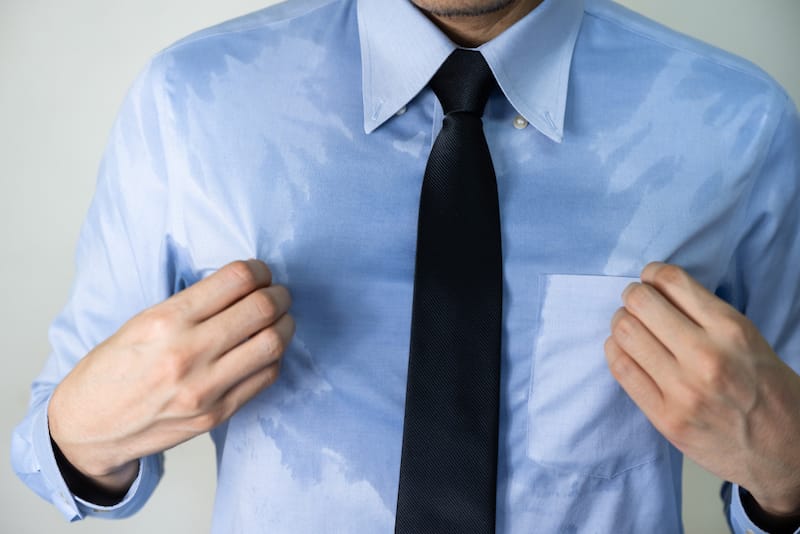There could be different reasons why a purple stain would be on your pillow. It could be as simple as your night cream, eye masks, hair product chemicals bleaching out with your pillow, or in rare instances caused by Chromhidrosis, a medical condition that causes sweat to have a color.
I’ve condensed everything you need to know about this topic, possible causes, and how to avoid or get rid of the purple stains.
Possible causes of stain on the pillow
There are 4 possible causes of the purple stain on your pillow. 3 of them are things you can make immediate changes to, while the 4th requires you to visit your doctor for further help.
1. Hair products

Yes, we rinse most of our hair products when we shower before going to bed, but if you are using products that are supposed to have an extra hold on your hair (like a serum, cream, or bleach), chances are there will be some chemical residue that could be absorbed by your pillow.
2. Face products

This is not so hard to believe, especially now that there are so many products on the market claiming to be essential for your nighttime routine.
There is nothing wrong with doing just that if it works for you and your skin.
Keep in mind that some chemicals react to each other when combined, and it may not react badly to your face (and neck), but it could do the opposite with something else that it gets close contact with, like your pillow or blanket.
3. Eye masks

Not the patch that is part of your nighttime routine but the small fabric shaped to cover just your eyes.
Most of the time, these masks come in dark colors to blackout the lights outside while you are getting your good night’s sleep.
Sometimes the fabric used for the masks “bleed out” its color when wet, and yes, if you sweat on them.
4. Chromhidrosis
This rare chronic condition is described as causing sweat to have a color, usually black, blue, green, yellow, or brown.
Though chromhidrosis is benign, it may lead to emotional or psychological distress.
It was said to be a disorder of the sweat glands that manifests with colored sweat on the face, in the underarms, or on the areola of the breasts (the darker circle of skin around the nipples).
Types of Chromhidrosis

1. Apocrine
This affects areas that contain apocrine sweat glands, which are the torso, eyelids, scalp, ears, and areola (the darker area of skin around the nipple).
The disease can have a significant psychosocial impact, and treatment remains challenging.
Red and pink coloring of sweat is less common in cases of apocrine chromhidrosis, which is often in favor of darker-colored sweat.
The distribution involved the inguinal canal, which is also less frequently seen.
2. Eccrine
Since eccrine sweat glands are widely distributed, this can affect sweat in almost every area of the body.
It is the production of colored sweat by the eccrine sweat glands that can occur at any age and affects both sexes.
It is due to water-soluble colored dyes and other chemicals being excreted in the eccrine sweat, such as ingesting medications, metals, and dyes.
Some of these include tartrazine-coated bisacodyl laxatives, quinine, rifampicin, clofazimine, methylene blue, mercury, and copper.
This can affect the skin over any body area but is often worst on the palms and soles where eccrine sweat glands are most concentrated.
The color of the sweat depends on the dye, drug, or chemical involved, with red, blue, orange, brown, yellow, green, black, and white sweat reported.
3. Pseudochromhidrosis
This is when dyes, chemicals, or pigment-producing bacteria mix with colorless eccrine sweat to form colored sweat or the discoloration of normal colorless sweat by an exogenous agent on the skin surface.
The sweat can become discolored by chromogenic bacteria and fungi, including Serratia marcescens (associated with pink-red sweat), Pseudomonas aeruginosa (associated with green-blue sweat), Corynebacterium (associated with black-brown sweat), Malassezia furfur, Bacillus cereus and other Bacillus species (associated with blue sweat).
Pseudochromhidrosis can affect any area in the body. However, the face, neck, and palms are the most commonly involved parts.
FAQs
How can I remove the stains on my pillow?
Mix a couple of cups of cool water with a teaspoon of dish soap.
Next, dip a section of the clean white fabric towel into the soapy mixture and wring out as much water as possible.
Blot the stain with the white fabric towel and repeat.
Can sweat discolor sheets?
The most common culprits behind yellow stains on white sheets are skin oils, sweat, and other bodily fluids.
This isn’t a reflection of how clean you and your body are; there’s no preventing your body from producing these fluids and oils.
Conclusion
Even though the possible causes are not life-threatening, they can cause emotional distress, leading to more stressful situations.
Figuring out why there are stains on your pillow is just the first step to making sure that you are as healthy as you can be.
Don’t hesitate to reach out to your local healthcare provider, no matter how silly you think the reason is. If it bothers you, then it’s worth having it checked.


